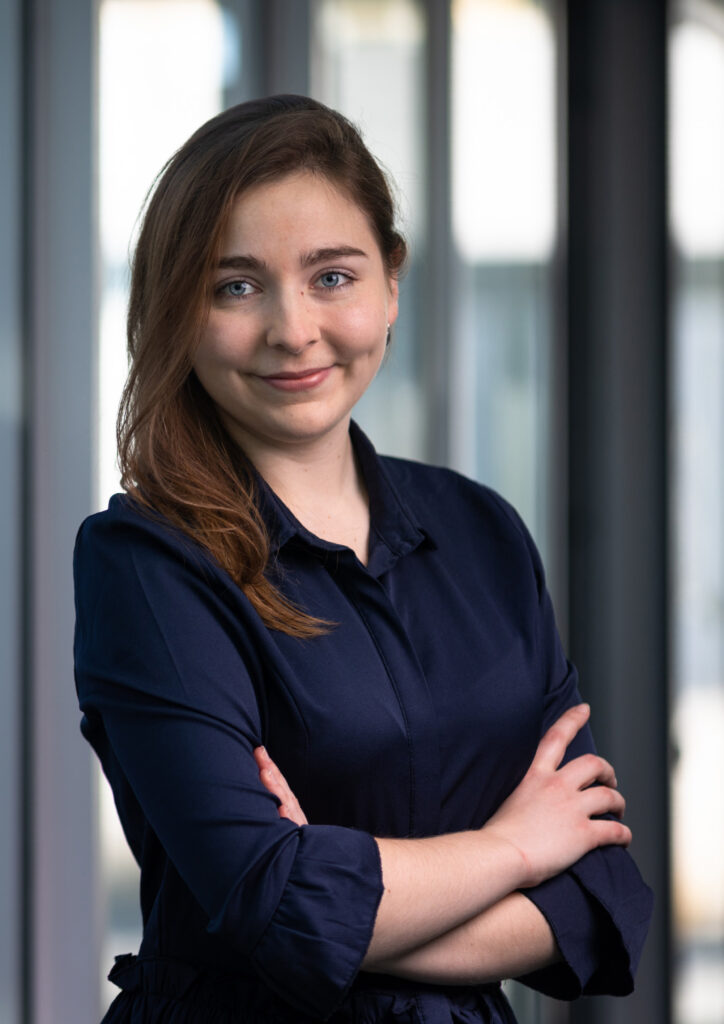Working at Cambridge was a great experience — the results are products of hard work and teamwork

In April 2023, the physical chemist Veronika Šedajová left to work at the University of Cambridge, UK. At the prestigious Yusuf Hamied Department of Chemistry, she worked on materials research in close contact with industry. Not only did she gain new experience there, but she also capitalised on her previous experience gained at CATRIN owing to her involvement in international projects of the European Research Council and European Innovation Council granted to Michal Otyepka.
How was it working in Cambridge?
It was a completely different microcosm than what I was used to. In the beginning, I had to get used to a different environment and culture. I worked in a research group of over 50 people. Everyone came from a different background, had different experiences and knowledge. But there was a huge collegiality, and whatever problem I had, I knew who to ask for help. Each of us had clearly defined assignments and areas of responsibility.
What was different about the science there?
The approach to science was different, but this is related to the fact that at CATRIN, I was mainly involved in applied research before I left for the UK. We were inventing materials and finding applications for them. In Cambridge, it was mainly fundamental research. We often worked with commercially available materials and investigated them in great detail. For example, I worked with my colleagues on lithium-ion batteries. We meticulously studied how they work and what causes their degradation, unfolding the structure at the atomic level. We tackled the research in a different way. It wasn‘t necessary to be the best in the field, although my colleagues were engaged in such projects as well, but rather contribute to the overall understanding of the subject. Experiencing this concept of science was very interesting to me. Seeing how top scientists handle research questions and how they seek answers to them was a new experience.
Can you tell us more about what you have been doing?
I am bound by confidentiality, but I can say that we collaborated with a commercial company to understand how active materials in batteries work. I very much appreciate that I was able to do fundamental research with a commercial partner. It also gave me an insight into how it works in their corporate environment. I also learned a number of new techniques and how to operate different instruments. At CATRIN, we employ operators, whereas at Cambridge, everyone does everything by themselves. It‘s very different when you‘re sitting at a microscope and you have to come up with the results yourself. The threads start to connect faster, but it may take much longer to acquire the data.
So, was Cambridge a valuable experience even though it was not your first international internship?
Absolutely, although it was often not easy. I have to say that it pushed me in many ways. I am very thankful to Professor Clare P. Grey, because her support and the way she runs her group has been incredibly inspiring. Compared to the Czech academic environment, there is much greater internationalisation, diversity and a different view on the position of women in science. It teaches you about mutual respect. Although the level of internationalisation is high at CATRIN, it is even higher at British universities. In our group of 50, 26 nationalities met at one point. I made friends amongst my colleagues and also outside of work, and I will miss them. What I will not miss though are the sandwiches for lunch. I couldn‘t cope with them!
Now you‘re back at CATRIN. Has it changed?
Although I did not lose touch with colleagues at CATRIN during my time in Cambridge, I was surprised upon my return. CATRIN has both changed and not changed. I have found many new people here, and a lot of work has been done, including the organisation of the labs. I‘m still involved in developing new materials for electrical energy storage, but I‘ve moved to a different research group. I will definitely stay loyal to graphene derivatives and their applications, but we want to open up new research directions. I‘m just getting started, but I‘ve already managed to get some inspiration at an international trade fair. Everything is still very much open.
You‘ve already revealed what you won‘t miss about Cambridge. But, what did you miss there and can now enjoy to the full?
My family, of course, but also Czech beer, even though it‘s on tap in some places in Britain too. It‘s not easy to be in a foreign environment where everything is completely new; you like to come back home. I have friends at CATRIN and I‘m looking forward to seeing what great things we‘ll be able to do and what I‘ll be able to get involved in. I‘m also thankful to Michal Otyepka, whose group I work in now, for giving me this opportunity.
Mgr. Veronika Šedajová, Ph.D. (*1994)
Veronika Šedajová is a physical chemist who has researched graphene derivatives since the beginning of her university studies. During her undergraduate studies, she started working at the Regional Centre of Advanced Technologies and Materials of Palacký University. During her PhD, she studied active materials for use in supercapacitors. She won the prestigious Jean-Marie Lehn Prize for Chemistry in 2022 and is the author/co–author of 30 scientific papers. She has also gained international experience at prestigious institutes, focusing on energy storage and materials science in, e.g., the United States, France and Spain. After completing her PhD, she obtained a postdoctoral position at the Yusuf Hamied Department of Chemistry, University of Cambridge, where she studied active materials for Li-ion batteries using optical scattering microscopy. She is currently working at CATRIN as a researcher.

